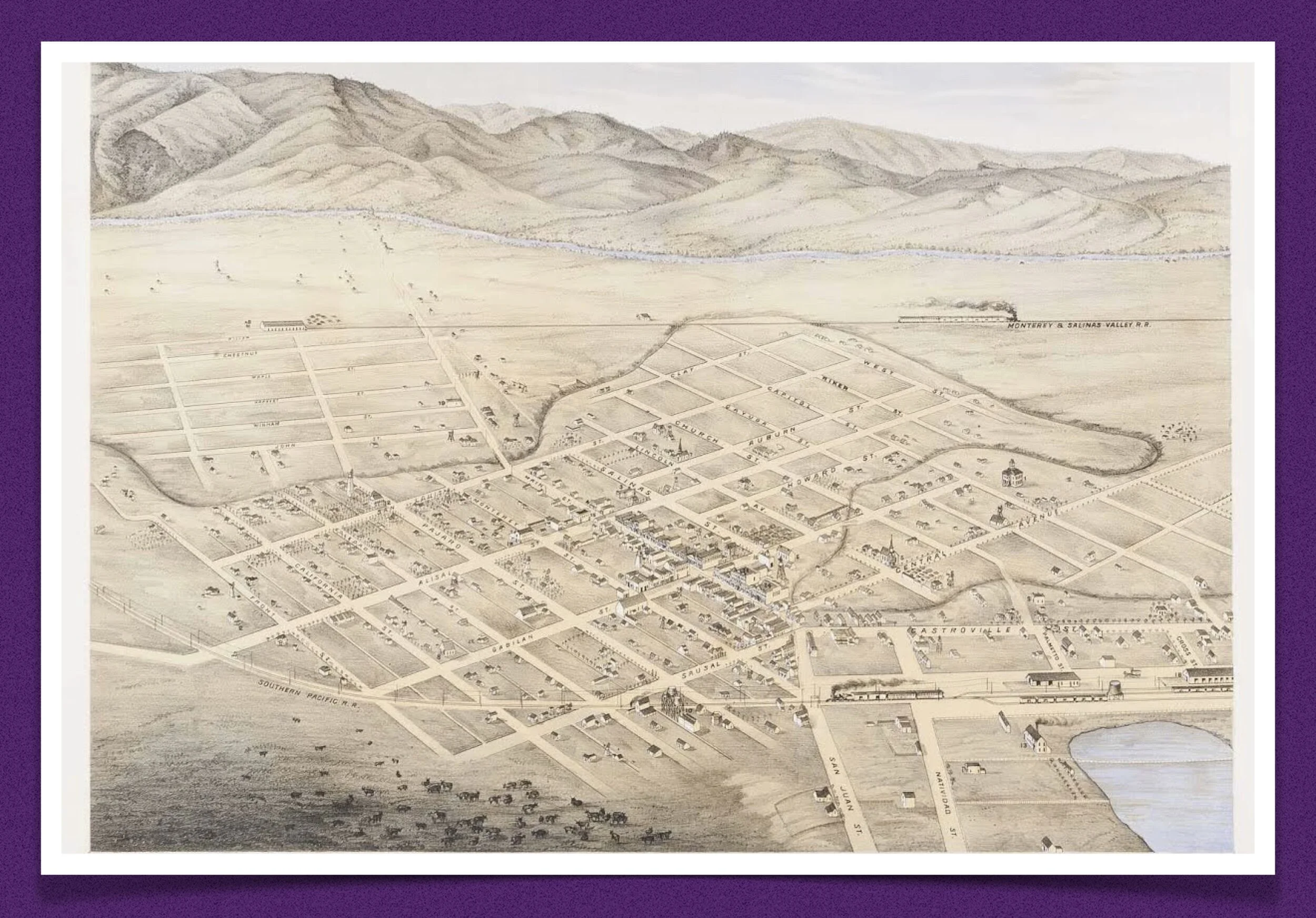
Literature
Central Coast Gallery Walk
Station Eight: Salinas
Heart of the Salinas Valley
Under Spanish and Mexican rule, the area around Salinas and the Salinas Valley as a whole was sparsely populated with only a few ranchos. During the Mexican-American War, the area was claimed by John C. Frémont for the United States by planting a flag on one of the peaks on the Gabilan Mountains just outside of what is now Salinas. Immediately after the United States took over, not much changed in the area with most of the focus being directed towards the coastal areas.
In the 1850s, in the valley, there was an intersection of stage coach roads near a big bend in the Salinas River (known as the Alisal Slough). In 1854, six years after becoming a part of the United States, a group of American settlers living near this intersection opened a post office at the junction, naming their town "Salinas." The streets of Salinas were laid out in 1867, and the town was officially incorporated as a city in 1874. It was around this time that the Monterey River was erroneously named the Salinas River after the closest town by an American cartographer. The name stuck and the river, of course, is now known universally as the Salinas River.
The conversion of grazing land to crops and the coming of the rail road in 1868 to transport goods and people was a major turning point in the history and economic advancement of Salinas. Dry farming of wheat, barley, and other grains as well as potatoes and mustard seed was common in the 1800s. Chinese labor drained thousands of acres of swampland to become productive farmland, and as much early farm labor was done by Chinese immigrants, Salinas boasted the second largest Chinatown in the state, slightly smaller than San Francisco. Irrigation changed farming in Salinas to mainly row crops of root vegetables, grapes and sugar beets. Many major vegetable producers placed their headquarters in Salinas. Driven by the profitable agricultural industry, Salinas had the highest per capita income of any city in the United States in 1924.
Following World War II major urban and suburban development converted much farmland to city. The city experienced two particularly strong growth spurts in the 1950s and 1960s, and again in the 1990s and early 2000s. Today, much of what is in the city limits of Salinas has become urbanized, with most of the farmland existing outside of the city on county land.
“He could see the white town of Salinas far out in the flat and the flash of its windows under the waning sun. Directly below him, in an oak tree, a crow congress had convened.”

